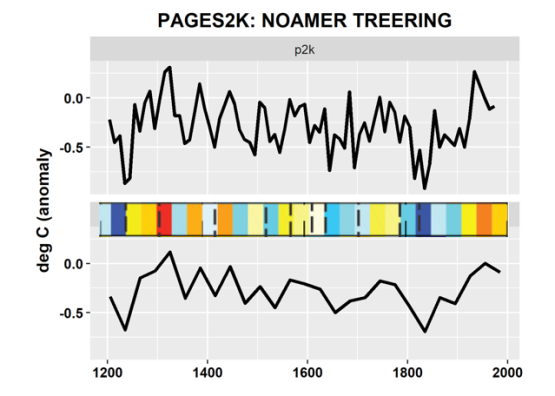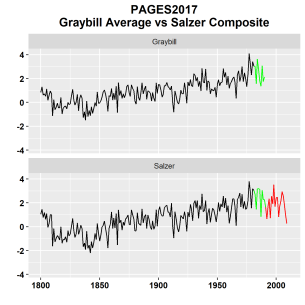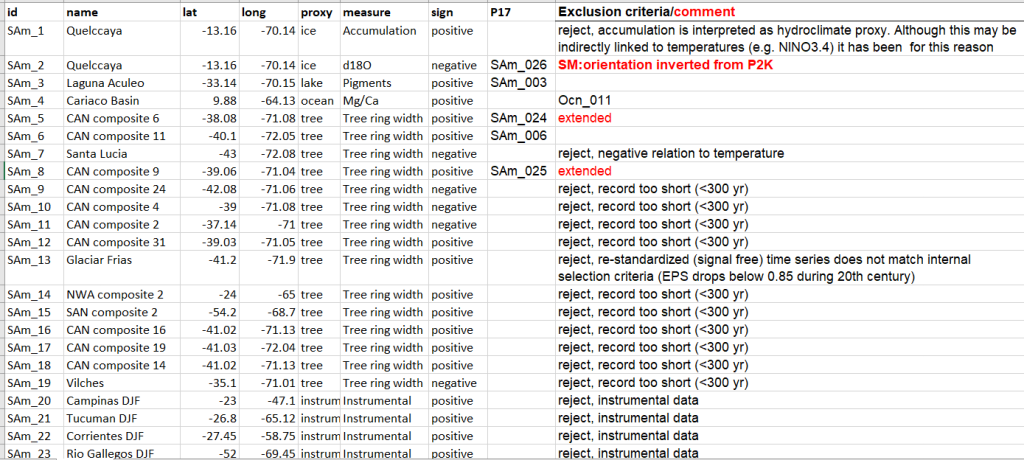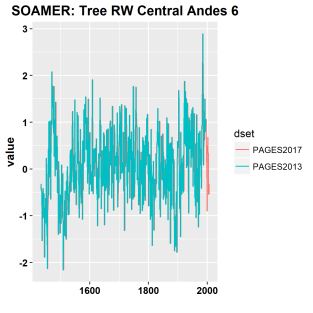- Joined
- Jan 28, 2013
- Messages
- 94,823
- Reaction score
- 28,342
- Location
- Williamsburg, Virginia
- Gender
- Male
- Political Leaning
- Independent
Replicating Mann by replicating Mann's errors, continued, from the link at #8:
PAGES 2013
To the accompaniment of claims of quality control, PAGES (2013) dramatically culled the population of the Mann et al 2008 North American tree ring network.
The predecessor network used 790 North American tree ring chronologies: 696 individually identified series plus 94 Schweingruber density (MXD) series that contributed to 37 gridded MXD series. (The fudging of these 37 gridded series is an interesting and under-appreciated chapter in hide the decline, in which Mann chopped off post-1960 declining values and replaced them with instrumental data – see here.)
The new PAGES (2013) network was reduced to 146 series, i.e. 81% (644 series) of the Mann et al (2008) was discarded as presumably not meeting PAGES (2013) quality control criteria. Approximately 45% (66) of these series were reported in PAGES (2013) as having a positive relationship to temperature according to their criterion, with 55% (80) having a negative relationship.
Despite the 81% cull, every (all 20) Graybill stripbark chronology of the MBH98 CENSORED directory (each of which had been subsequently used in Mann et al 2008) was used once again in the PAGES 2013 North American network. In this new network, just like Mann et al 1998, the non-stripbark series – even when opportunistically oriented after the fact according to PAGES (2013) procedure – do not have a Hockey Stick shape. The next diagram compares network averages of scaled chronologies (left- stripbark; right – all other chronologies after orientation), also showing network counts in lower panels. Scale in top panel is identical for both series, but there are far more series in right diagrams.
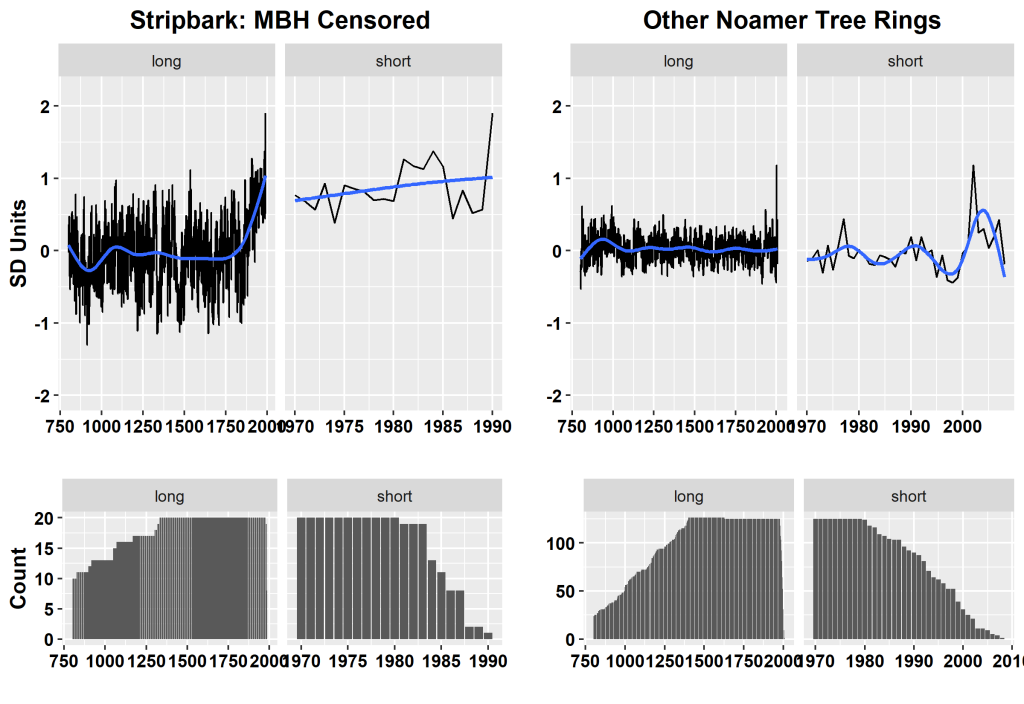
PAGES 2013
To the accompaniment of claims of quality control, PAGES (2013) dramatically culled the population of the Mann et al 2008 North American tree ring network.
The predecessor network used 790 North American tree ring chronologies: 696 individually identified series plus 94 Schweingruber density (MXD) series that contributed to 37 gridded MXD series. (The fudging of these 37 gridded series is an interesting and under-appreciated chapter in hide the decline, in which Mann chopped off post-1960 declining values and replaced them with instrumental data – see here.)
The new PAGES (2013) network was reduced to 146 series, i.e. 81% (644 series) of the Mann et al (2008) was discarded as presumably not meeting PAGES (2013) quality control criteria. Approximately 45% (66) of these series were reported in PAGES (2013) as having a positive relationship to temperature according to their criterion, with 55% (80) having a negative relationship.
Despite the 81% cull, every (all 20) Graybill stripbark chronology of the MBH98 CENSORED directory (each of which had been subsequently used in Mann et al 2008) was used once again in the PAGES 2013 North American network. In this new network, just like Mann et al 1998, the non-stripbark series – even when opportunistically oriented after the fact according to PAGES (2013) procedure – do not have a Hockey Stick shape. The next diagram compares network averages of scaled chronologies (left- stripbark; right – all other chronologies after orientation), also showing network counts in lower panels. Scale in top panel is identical for both series, but there are far more series in right diagrams.

Figure 3. Top left: average of the 20 stripbark bristlecone chronologies common to Mann et al 1998 and PAGES (2013), standardized to standard deviation units; top right – same for the other 126 tree ring chronologies in the PAGES 2013 tree ring network. Bottom: left – count of number of sites included in the stripbark network (maximum of 20); right – same for other 126 chronologies. Note that scale in bottom panel differs between two sides. PAGES(2013) truncated series to 1200-1987 (with many further truncated to 1500-1980). For this diagram, original chronologies from NOAA archive were used.

